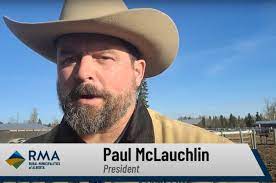In June 2022, Alberta’s then Energy Minister Sonya Savage, a former executive with the Canadian Energy Pipelines Association, warned the federal government not to consider a tax on windfall profits of the energy industry. When asked about the oil industry’s record cash flows and remediation liabilities, Savage stated:
“The current spike in oil prices isn’t enough reason to require the industry to spend more on cleaning up the tens of thousands of abandoned oil and gas wells in the province.”

In reflecting on this statement, it suggests that expanded spending by Alberta’ producers on remediation expenses might imply royalty payments to Alberta might fall. In short, the province may have a short-term financial interest in not losing revenue when reclamation spending increases. This contradiction is another example of the perverse effect the oil industry has on Alberta’s public finances and the environment.
The rapid rise in orphaned and abandoned wells in Alberta, as well significant unpaid municipal taxes, have focused attention on the financial stability of the conventional industry. Although the provincial government has made minor changes to address this serious financial concern, the Rural Municipalities Association (RMA) -which represents rural municipalities and counties who have over $250-million at stake- demanded the Alberta Energy Regulator prohibit any company in arrears on property taxes or surface leases from operating.

In late March, after three years of RMA pleading, the Alberta Energy Regulator (AER) will require proof of full payment of municipal property taxes prior to issuing a new license to a company or allowing a company to sell or purchase existing licensees. However, this action still allows companies with unpaid taxes to operate.
Royalties
According to the Alberta government
“a royalty is the share the resource owner charges developers…. the Alberta government sets conditions and royalties for resource development. Each producing oil or gas well, or oil sands project, has its own royalty rate which is determined by production volume and the resource market price.”
There has aways been controversy about Alberta’s royalty system. In 2007, after a period of very high natural gas prices and before fracking technology led to oversupply and deeply discounted pricing, Premier Ed Stelmach established a expert panel to revise the royalty system. The panel’s report, Our Fair Share was instantly controversial with the industry. The report, as its name suggested, recommended higher royalty rates to the resource owner. The provincial government retreated on the panel’s proposals and this controversy eventually led to Ed Stelmach’s demise several years later.

When the New Democrats formed government in 2015, one of their electoral promises was for a royalty review. This review, led by Dave Mowat of ATB Financial, “modernized” the royalty system to parallel the generic royalty system developed two decades earlier for oilsands projects.
The new system uses an ‘emulated revenue minus cost’ approach and harmonized the gross revenue royalty treatment with the generic oilsands royalty system.
This regime features two royalty periods for “pre-payout” of capital costs for bringing a well or oilsands project into production and a “post-payout” period where the royalty rate rises according to production, price and grades of oil. According to Alberta Energy this system is “consistent with global standards for the pre-payout/post-payout models of risk and profit sharing, without introducing costly process burdens…”
During the pre-payout period a flat royalty rate of 1 to 9% of producer’s gross revenue is collected until a mine or well’s allowable costs have been recovered. After the capital costs are covered, the royalty rate becomes the greater of 25 to 40% net revenue, and pre-payout rate. Royalty rates however “drop to match declining production rates when the well reaches maturity.” This measure may be designed to assist in companies in paying for reclamation obligations.
Allowable costs are deducted from resource revenues to determine net revenue. Allowable or eligible costs reduce net revenue and therefore the government’s take in royalties. Allowed costs include regulatory compliance costs such as taxes, carbon levies, reporting, reclamation, remediation, surface access and other fees including acquire development rights from the province.
So in practice higher reclamation expenses will reduce the government’s take. And if the official estimates of the liabilities for conventional producers is accurate- $35-billion- this may well mean that conventional royalties will fall signioficantly if the government and regulators push industry harder to clean-up.
In July 2019, the newly elected UCP government passed the Royalty Guarantee Act which guaranteed for a period of at least 10 years no “major changes” to the oil and gas royalty structure.
Revenue or Development?
According to the energy department’s website: “The Modernized Royalty Framework provides industry with similar or better returns for wells under high and low prices and as good or better returns for Albertans.”
In explaining the net revenue system on its website, the department cautions
“If investors cannot recover their costs and make a return on their investment, they will not invest, and the resource will not generate jobs or economic value. All current royalty frameworks encourage industry to innovate and reduce capital and operating costs, which will increase value no matter what oil prices are.”
From the above statement, I infer that Alberta’s revenue system is not driven primarily for raising revenue – that is maximizing revenue for the government- but rather to foster more industry investment, jobs and innovation in the industry. Unfortunately, as well productivity falls, Alberta’s regulatory system and royalty system fails to support the fulfilment of remediation and reclamation obligations.
It is also important to note that one of the recommendations of the Fair Share Report was to move the royalty collection function from the Energy department to the Finance department because the Energy department’s sees its mandate primarily in developing the industry.
Well abandonment
According to the most recent annual report of the Orphan Well Association (OWA), the number of orphan sites in its reclamation inventory increased 20% to 5,887 in fiscal 2021-22. This figure is up nearly six times from the March 2018 year end. OWA is responsible for taking over inactive wells without identifiable owners. The OWA is directed by a board of directors which is majority controlled by the industry. There is no board representation from the Environment and Parks ministry or from the general public. The chair of the board is an executive from the Canadian Association of Petroleum

Producers.
Although the Alberta and federal governments have made over $550 million in loans to the OWA and the federal government has given a $1-billion grant to the Alberta government for well reclamation, the industry’s contribution in the past two years has been only $135-million. This compares to the approximate $33.9-billion in oil profits by the four largest oilsands producers.
The annual levy to pay for OWA’s reclamation efforts is recommended by its board for the approval of the AER. According to a recent Auditor General’s report, the AER had not scrutinized the OWA board’s recommendation on the industry levy prior to 2022. Under a system controlled by the industry it is not surprising to see governments, rather than industry, now picking up most of the tab for reclamation expenses. This outcome is inconsistent with the polluter pay principle which is central to Alberta’s “responsible environmental regulation.”
Is Alberta’s energy production “responsible”?
Considerable controversy has surfaced about the RStar proposal put forward by Danielle Smith when she was chief lobbyist for the Alberta Enterprise Group. Most disturbing about the letter is the tacit suggestion that the regulator’s persistent failure to address the orphan well issue implies government should be part of the solution – likely meaning governments have a role in paying for legal obligations of bankrupt companies.

One of the hallmark statements of the Alberta government and the Alberta oil and gas industry is that Alberta continues “to lead the way in responsible energy production.” Given the recent revelations about a toxic leak of fluids from Imperial Oil’s Kearl Lake oilsands tailings ponds and the massive public expenditures for remediation which the industry is reluctant to fund, the above claim about its responsible energy production rings a little hallow.
Suggested Reading:
Kevin Timoney’s Hidden Scourge 2021 from McGill-Queen’s University Press
Related Posts